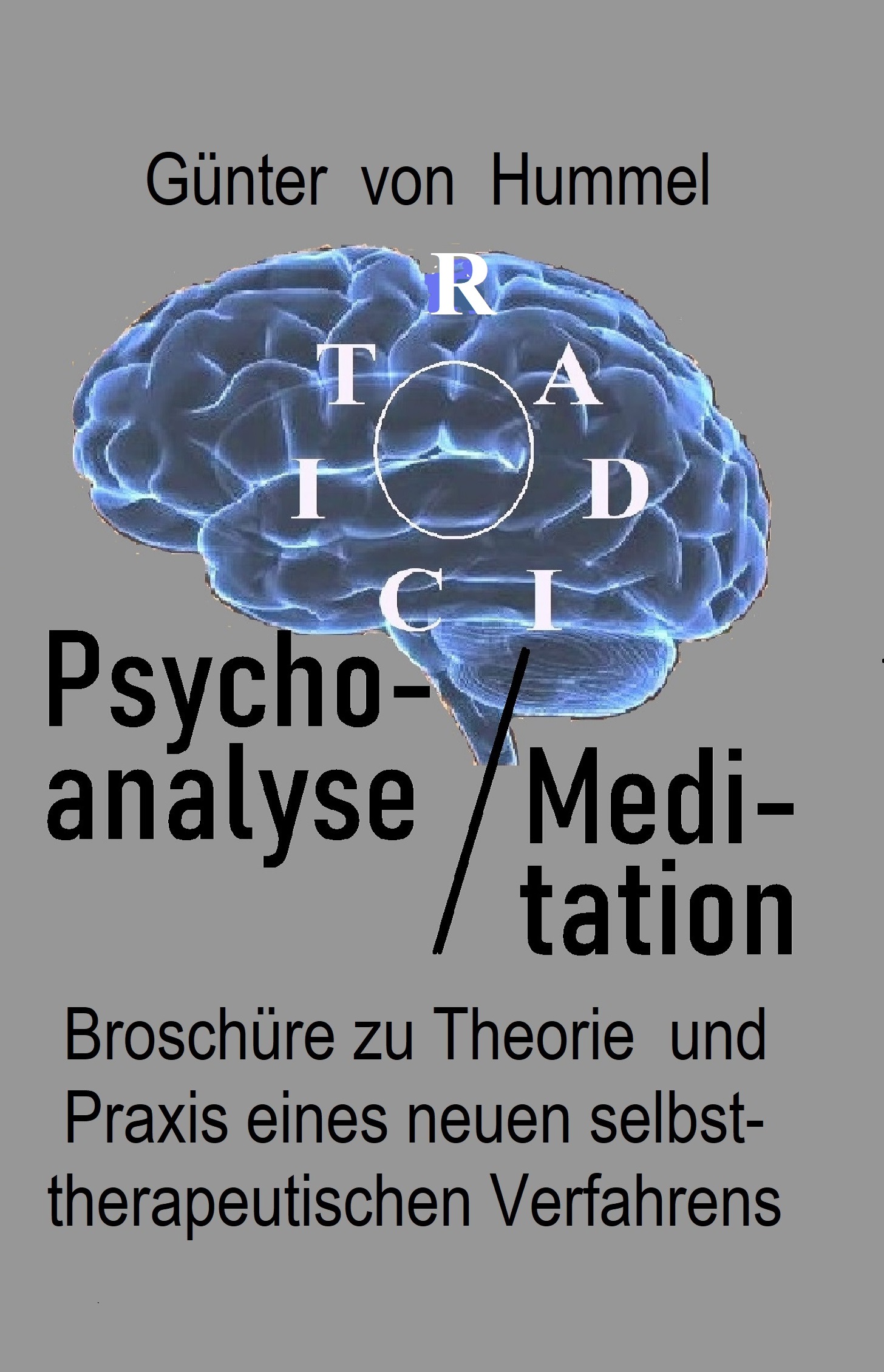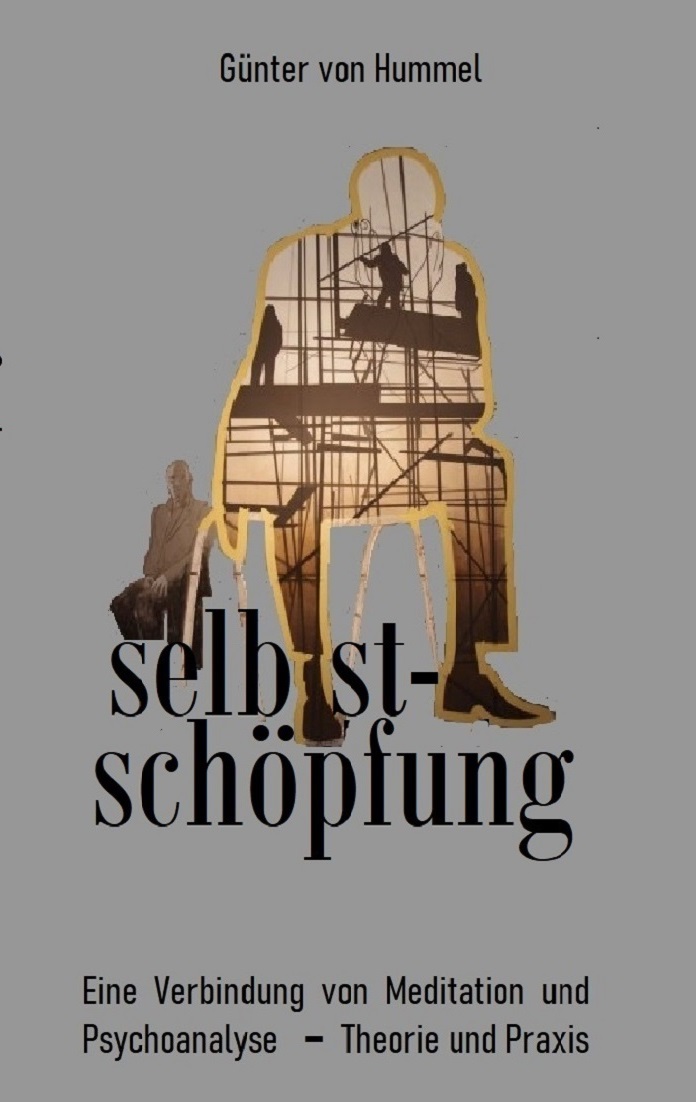Beitragsseiten
After all - and in line with Freud's concept - the psychic apparatus is comprised in the same way as the above mentioned two components. One component is and remains mostly unconscious concerning its nucleus. It is original and more illustrative and it is near to what Freud calls the scopic drive, which is highly multi-layered in its 'primal process' . But it has a very different structure as the above mentioned illustrative and image-like conscious approach by meditation to the psychic apparatus. Nevertheless, we will see later on, that we must find a connection of the conscious and the unconscious at exactly this point. The scopic drive deals in a certain kind with what Freud has called a 'compulsion repetition'. For seeing, for gazing an object one has - as neurologist Linke says - to grab twice or even more with looking intention.
There is a kind of repetition using the scopic drive. The other component is, as I also mentioned above, more word-like (Lacan calls it: drive to speak), and can be made aware of through the interpretation of dreams, the interpretations of so-called 'free associations' or through experiencing and interpreting verbal blunders and plights. The question arises: how are the two components I described, combined with each other in said method? How is something similar to meditation, and practiced, at home to be combined with an exact science of the psychoanalytic unconscious? How do you work with the first of these components, with the illustrative, but without neglecting the second, more word-like component?
And vice versa: would you still be in the field of psychoanalysis, were you to practice something on your own, without your psychoanalyst there with you? How can we speak of meditation, if such is emphasized as an intellectual subject? This can only be done by intellectual comprehension and by grasping practically what the essence of both is - psychoanalysis and relaxation methods. The essence lies in a central linguistic-like element which Lacan calleda 'linguistic crystal'. This again reflects our two elements: the crystal-like is an 'It Radiates', 'It Shines', again similar to the original perceiving- or scopic-drive. It is neither physical (as we understand physics today) nor is it psychical (if we understand it to be conscious). But it is unconscious or even better: an unconscious real, an imaginary signifier. The same applies to the linguistic-like element which is an 'It Sounds', 'It Speaks' or theoretically spoken: a verbal signifier. Both are in a narrow combination to each other.
This combination arises through the production of the so called 'free associations' in psychoanalysis, namely the freely expressed ideas the patient has to pronounce. And in meditation, or relaxation methods, it is used in mantra-like formulae, in Koans (Zen-Buddhism) or in 'holy names'. But nowadays we cannot practice psychotherapy with holy names or mantras, because we cannot derive them in a scientific way. Maybe they were helpful to earlier generations, but here and now we will create a scientific method, namely 'Analytic Psychocatharsis'. In this method, the 'linguistic crystal' is formed by formulations which contain a one stringent formulation of three or more meanings, or of three or more significations. I call these Formula Words. Below is an example of such a formulation in Latin (which is similar to Sanskrit, and both are very well suitable languages for dealing with this linguistic construction):

If you start reading from the O or A or M, you will always receive or hear a different meaning from this letter-circle. Orsa C eram means: I had a beginning hundred times. Amor sacer means: Love is serious. Mors acer means: Death is bitter. Ac era mors means: the mistress is death-like, and so on. Even if all these meanings sound strange, it is important that the meanings in combination with each other do not have a conscious nor a logical sense. Thereby, the person reading this formulation remains in a 'floating, poised attention'. This precisely represents the psychoanalyst's situation, whose task it is to remain in such a condition for listening to not only what the patient speaks, but also what can be heard from between the spoken lines, or, what sounds come from the unconscious! It doesn't matter what the single meaning of one or the other formulation is. The structure alone is important, as is the 'linguistic crystal', and how the development is to be comprehended. Moreover, how it intervenes directly in the unconscious.
Both the unconscious and the 'linguistic crystal' are constructed in the same way. I have already stated the practice of this actually new method in other publications, but would like to emphasize it in brief and again: As a first exercise, one sits in a convenient position, at best with closed eyes while remaining concentrated inside. At the same time one should silently repeat the Formula Words mentally. This constantly engages the process of the Shines / Speaks in correspondence to the principle of repetition. The unconscious is called upon and invoked. It is increasingly forced to itself issue its content, truth and essence in the subject. Again: The Formula Words are silently repeated during this experience of pure introverted attention, or of this 'pure visibility'. It is just such monotonous repetition of the Formula Words that support experience with the Shines, and vice versa - the whole process is thereby deepened.
This repetition stays in contrast to the above mentioned 'compulsed repetition' which is unconscious. The repetition in Analytic Psychocatharsis is conscious but this does not disturb the main concept of psychoanalysis. The psychoanalyst S. Heenen-Wolf said accordingly with Lacan that there exists also a 'work-repetition'. That means one can confront the unconscious repetition with a conscious one but only if this does not contain a prepared meaning, a special significance.


